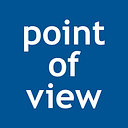Growing Case for Real World Evidence in Pharma — Lorraine Marchand

I was honored to contribute the foreword to “Real-World Evidence in the Pharmaceutical Landscape,” a new book whose lead author Sunil Dravida, is a friend and colleague.
As someone who has worked in leadership roles in the life sciences industry for more than 25 years, I understand how time consuming and expensive it is to bring new treatments and technologies to market — and how the use of the kind of RWE (Real-World Evidence) that Sunil and his colleagues analyze in their book, can accelerate a concept-to-launch timeline that currently takes 10–12 years.
As they define it in their book, Real-World Data (RWD) is generated from settings other than traditional randomized clinical trials and can be collected from a variety of sources, such as electronic health records, claims data, product and disease registries, patient-reported outcomes, and patient-generated data, including in-home use settings or wearable devices, biomarker and genomics data, lab data and social media. Real World Evidence (RWE) are the insights generated by mining such sources for RWD.
RWE, as Sunil correctly notes, has proven to be transformative in all aspects of drug research, development and commercialization.
While new product development can’t always be rushed (good ideas take time to formulate and test) the pandemic has shown us the urgent need for the creation of new, express lanes along the innovation highway. The use of RWE can help with that — and not just in the pharma and life sciences industries but across the healthcare ecosystem with payers, providers and government stakeholders.
In my upcoming book The Innovation Mindset, we talk about the importance of being nimble, and about being able to pivot (and when necessary, to re-pivot) at every step in the development of any new product, approach or idea. That agility is what the life sciences industry requires as we explore the best use cases for RWE to drive insights and better decision making, whether it’s bringing a drug to market more efficiently and effectively or determining if a treatment is clinically safe and efficacious and cost effective.
The lesson for would-be innovators? Identify the best use cases for RWE and understand the needs of various stakeholders and customers as they develop and evaluate therapies. If you’re an innovator with a Big Idea in the RWE sector, you’ll need deep customer insights and the ability to know when to pivot to ensure commercial success.
To gain a deeper understanding of how innovators think, check out my new book, The Innovation Mindset.
Lorraine is a life sciences consultant, speaker, writer, and professor. She’s managed R&D and Commercial for private and publicly held life sciences companies and founded two start-ups.
An expert at showing entrepreneurs how to communicate the value of their innovations to investors, Lorraine has helped numerous entrepreneurs successfully market their technologies. She developed a proven method for successful innovation and has become specialized in contingency planning and the “art of the pivot”.
“You never fail, you always learn”, is one of her mantras.
